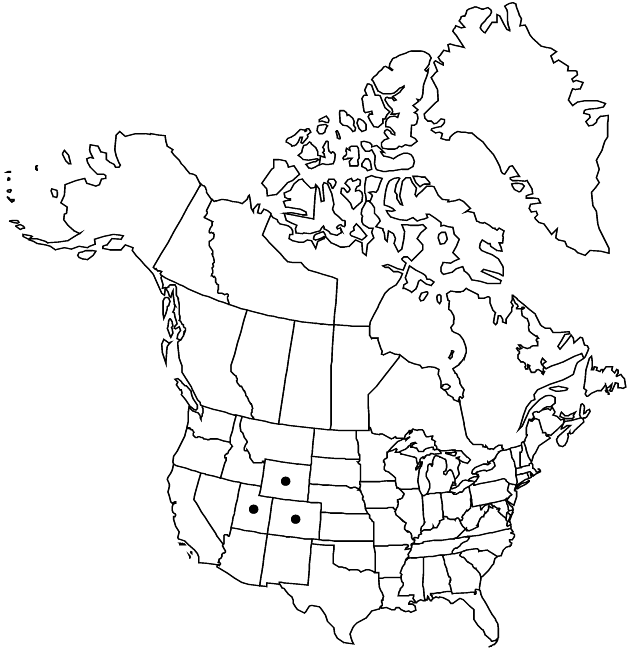Difference between revisions of "Cirsium barnebyi"
Brittonia 33: 296, fig. 3. 1981.
FNA>Volume Importer |
FNA>Volume Importer |
||
| Line 48: | Line 48: | ||
|publication year=1981 | |publication year=1981 | ||
|special status= | |special status= | ||
| − | |source xml=https://jpend@bitbucket.org/aafc-mbb/fna-data-curation.git/src/ | + | |source xml=https://jpend@bitbucket.org/aafc-mbb/fna-data-curation.git/src/f50eec43f223ca0e34566be0b046453a0960e173/coarse_grained_fna_xml/V19-20-21/V19_84.xml |
|tribe=Asteraceae tribe Cardueae | |tribe=Asteraceae tribe Cardueae | ||
|genus=Cirsium | |genus=Cirsium | ||
Revision as of 21:21, 16 December 2019
Perennials, 30–50 cm; caudices and woody taproots. Stems 1–few, erect, gray-tomentose or glabrate; branches few, above middle, ascending. Leaves: blades oblong-elliptic, 10–35 × 2–7 cm, strongly undulate, margins shallowly to deeply lobed, lobes 8–15 pairs, linear-lanceolate to broadly triangular, closely spaced, spreading, coarsely spinose-dentate or cleft into 2–5 spine-tipped divisions, main spines 3–5 mm, faces densely gray-white-tomentose; basal usually present at flowering, winged-petiolate; principal cauline becoming sessile and progressively reduced distally, bases decurrent as spiny wings to 5 cm; distal cauline usually much reduced, less lobed. Heads 1–20+, borne singly or clustered at branch tips, in leafy, ± corymbiform arrays. Peduncles 0–4 cm. Involucres ovoid to hemispheric or campanulate, 1.7–2 × 1.5–2 cm, loosely arachnoid on phyllary margins or glabrate. Phyllaries in 6–9 series, imbricate, ovate (outer) to linear-lanceolate (inner), entire, abaxial faces with narrow glutinous ridge; outer and middle appressed, spines ascending to spreading, stramineous, 2–7 mm; apices of inner often flexuous, narrow, flat, entire, spineless, glabrous. Corollas lavender to pink-purple, 18–28 mm, tubes 7–9 mm, throats 4–8 mm, lobes 5–11 mm; style tips 3.5–5 mm. Cypselae tan to brown, 5–5.5 mm, apical collars colored like body, narrow; pappi 15–23 mm.
Phenology: Flowering summer (Jun–Sep).
Habitat: Dry juniper woodlands, sagebrush scrub, on shale, limestone, sandstone
Elevation: 1600–2600 m
Distribution

Colo., Utah, Wyo.
Discussion
Of conservation concern.
Cirsium barnebyi occurs from the southern Rocky Mountains of southwestern Wyoming, northeastern Utah, and northwestern Colorado.
Selected References
None.